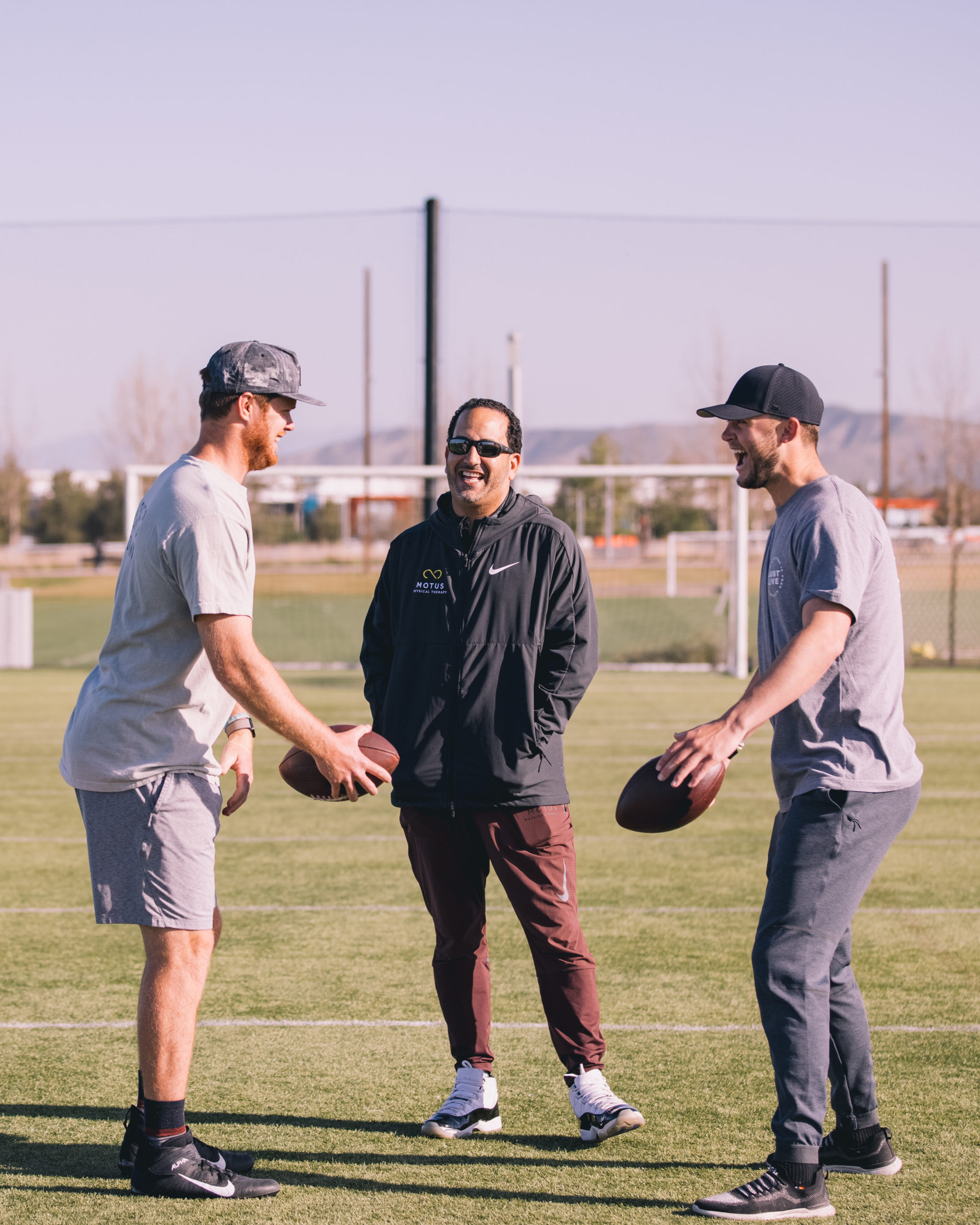If you are an athlete that relies on rotational power for your sport, then incorporating a kinetic chain into your training is essential. The kinetic chain consists of several muscle groups that work together to create movement. By targeting these muscles, you can improve your performance and reduce the risk of injury. This guide focuses on the benefits of kinetic chain for rotational athletes and the ways to achieve this
As a rotational athlete, your body is constantly in motion. To generate the most power possible, you need to have a strong kinetic chain. This means that all of the joints and muscles in your body must be working together efficiently to create the rotational force.
The primary joints involved in the kinetic chain for rotational athletes are the hips, shoulders, and elbows. The muscles that attach to these joints produce the majority of the force that is transferred to the bat or club.
Kinetic chain exercises help train and develop the muscles used in rotational movements. These exercises can improve performance in sports that require rotation, such as golf, baseball, and tennis.
There are many benefits to training with kinetic chain exercises. These exercises can:
– Improve muscle power
– Increase range of motion
– Enhance coordination
– Reduce injury risk factors
- Start in a standing position with your feet shoulder-width apart.
- Hold a medicine ball in front of your chest with both hands.
- Scoop the ball down between your legs and then explosively throw it up in the air as you rotate your torso and hips to the left.
- Catch the ball and repeat the movement to the right.
- Continue alternating sides for the desired number of reps.
- Sit on the ground with your knees bent and feet flat on the floor.
- Hold a medicine ball in front of your chest with both hands.
- Lean back slightly so that your torso is at a 45-degree angle to the ground.
- Twist your torso to the left, then to the right.
- Continue alternating sides for the desired number of reps.
- Start in a standing position with your feet shoulder-width apart.
- Hold a medicine ball in front of your chest with both hands.
- While keeping your lower body stationary, twist your torso and hips to the left, then to the right.
- Continue alternating sides for the desired number of reps.
It is very important to properly execute kinetic chain exercises in order to avoid injury and ensure that the muscles are worked optimally. Here are some tips on how to properly execute these exercises:
- Start with a light weight and gradually increase the load as you become more comfortable with the exercise.
- Make sure that your joints are aligned properly before starting the exercise.
- Use a full range of motion when performing the exercise.
- Focus on using the muscles, rather than momentum, to move the weight.
- Control the weight throughout the entire range of motion.
- Breathe deeply and evenly throughout the exercise.
- Repeat the exercise for the specified number of repetitions.
- Perform the exercise on both sides of the body if working both sides equally is desired.
- Progress to more challenging exercises as your strength and endurance improves.
- Always consult with a qualified health professional before starting any exercise program.
The benefits of using a kinetic chain in your training routine are numerous. By incorporating this type of training into your workouts, you can:
– Improve your explosiveness and power
– Enhance your coordination and balance
– Increase your speed and agility
– Build strength and endurance
– Reduce your risk of injury
The kinetic chain is the series of joints and muscles that work together to produce movement. It starts at the center of the body and moves outwards to the limbs. Each joint and muscle plays an important role in keeping the body stable and moving efficiently. When one part of the chain is not working properly, it can cause problems throughout the entire system.
The most common problem that occurs in the kinetic chain is when one joint is not moving correctly. This can cause a loss of power and efficiency in the rest of the joints and muscles. It can also lead to hip or shoulder pain and knee injuries. Joints that are not moving correctly can also cause muscles to become tight and weak. This can further limit range of motion and cause pain or shoulder injury. Shoulder internal rotation torque is an example of a problem that can occur in the kinetic chain. Shoulder and elbow injury are common in baseball players due to the high amount of torque placed on these joints due to overhead throwing motion.
- Check point one is the ability to create and maintain a stable pelvis.
- Check point two is the ability to produce and control force through the lower body.
- Check point three is the ability to generate power from the hips.
- Check point four is the ability to absorb force through the lower body.
- Check point five is the ability to effectively transfer force between the upper and lower body.
A properly functioning kinetic chain is important to the performance of all participants in your class because it allows them to move efficiently and with more power. When the kinetic chain is not functioning properly, movement becomes less efficient and powerful, and shoulder and elbow injuries are more likely to occur. The five checkpoints listed above are key components of a properly functioning kinetic chain, and if any of them are not functioning properly, the risk for ankle injuries and reduced performance increases. Therefore, it is important to ensure that all participants in your class have a properly functioning kinetic chain in order to optimize their performance and reduce their risk for injury.
Concomitant rotator cuff activation is another example of a problem that can occur in the kinetic chain. Disabled throwing shoulder is a condition that can occur when the rotator cuff muscles are not strong enough to stabilize the shoulder joint during the throwing motion.
Disabled throwing shoulder is a condition that can occur when the rotator cuff muscles are not strong enough to stabilize the shoulder joint during the throwing motion.
A squat is a great example of a closed kinetic chain exercise. This exercise requires the hips, knees, and ankles to all work together to produce force, making it an ideal way to train the entire lower body.
When performed correctly, squats can help to improve lower body strength, power, and size. They can also help to reduce the risk for hip or groin injuries, making them a valuable addition to any training program. Traditional shoulder exercises , such as the overhead press, are another great example of closed kinetic chain exercises. Proximal lower extremity injury is a common problem in runners, and closed kinetic chain exercises can help to reduce the risk for this type of injury. Upper extremity exercises, such as the biceps curl, are also examples of closed kinetic chain exercises.
Lateral pelvic tilt is a common problem that can occur when the muscles of the hips and core are not properly balanced.





















